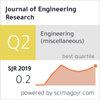基于最优能量管理的单机电力系统运行
IF 0.9
4区 工程技术
Q3 ENGINEERING, MULTIDISCIPLINARY
引用次数: 0
摘要
本文的重点是通过结合储能和需求侧参与来优化独立电网的能量。储能系统和需求方参与的日益普及主要归功于它们的优势,例如易于在电网中分配和关键时期的操作灵活性。该模型的主要目标函数包括通过最大化效率和最小化能源成本来优化独立电网。效率是通过不提供的能量来模拟的。能源消耗的成本由资源消耗的燃料成本表示。为了鼓励消费者在高峰时段减少用电需求,我们建议采用一种激励方法来鼓励他们参与。此外,氢存储系统在独立的能源网中运行,以增强主要目标。利用粒子群算法对能量利用进行优化,求解目标函数。在两个案例中进行了数值模拟,以验证和展示在结合存储系统和消费者时能量优化的有效性。对基于储能系统和用户参与能源管理的不参与和参与进行了案例研究。在储能系统和消费者参与的情况下,效率和能源成本分别比不参与的情况下提高3%和29.8%。本文章由计算机程序翻译,如有差异,请以英文原文为准。
Operation of the stand-alone electrical system based on optimal energy management
This paper focuses on optimizing the energy of a stand-alone energy grid by incorporating energy storages and demand side participation. The increasing popularity of energy storage systems and demand side participation is mainly attributed to their advantages, such as the ease of distribution in electrical networks and operational flexibility during critical periods. The main objective functions of the model involve optimizing the stand-alone electrical grid by maximizing efficiency and minimizing energy costs. The efficiency is modelled by energy not supplied. The costs of energy consumption are represented by the fuel costs consumed by resources. To encourage consumers to reduce their demand during peak times, an incentive approach is suggested for their participation. Additionally, a hydrogen storage system is operated in the stand-alone energy grid to enhance the primary objectives. The particle swarm optimization (PSO) algorithm is utilized to optimize energy usage and solve objective functions. Numerical simulations are conducted in two case studies to validate and demonstrate the effectiveness of energy optimization when incorporating storage system and consumers. The case studies based on non-participation and participation of the storage system and consumers in the energy management are implemented. With participation of the storage system and consumers, efficiency and energy costs are improved by 3% and 29.8% than non-participation of them.
求助全文
通过发布文献求助,成功后即可免费获取论文全文。
去求助
来源期刊

Journal of Engineering Research
ENGINEERING, MULTIDISCIPLINARY-
CiteScore
1.60
自引率
10.00%
发文量
181
审稿时长
20 weeks
期刊介绍:
Journal of Engineering Research (JER) is a international, peer reviewed journal which publishes full length original research papers, reviews, case studies related to all areas of Engineering such as: Civil, Mechanical, Industrial, Electrical, Computer, Chemical, Petroleum, Aerospace, Architectural, Biomedical, Coastal, Environmental, Marine & Ocean, Metallurgical & Materials, software, Surveying, Systems and Manufacturing Engineering. In particular, JER focuses on innovative approaches and methods that contribute to solving the environmental and manufacturing problems, which exist primarily in the Arabian Gulf region and the Middle East countries. Kuwait University used to publish the Journal "Kuwait Journal of Science and Engineering" (ISSN: 1024-8684), which included Science and Engineering articles since 1974. In 2011 the decision was taken to split KJSE into two independent Journals - "Journal of Engineering Research "(JER) and "Kuwait Journal of Science" (KJS).
 求助内容:
求助内容: 应助结果提醒方式:
应助结果提醒方式:


